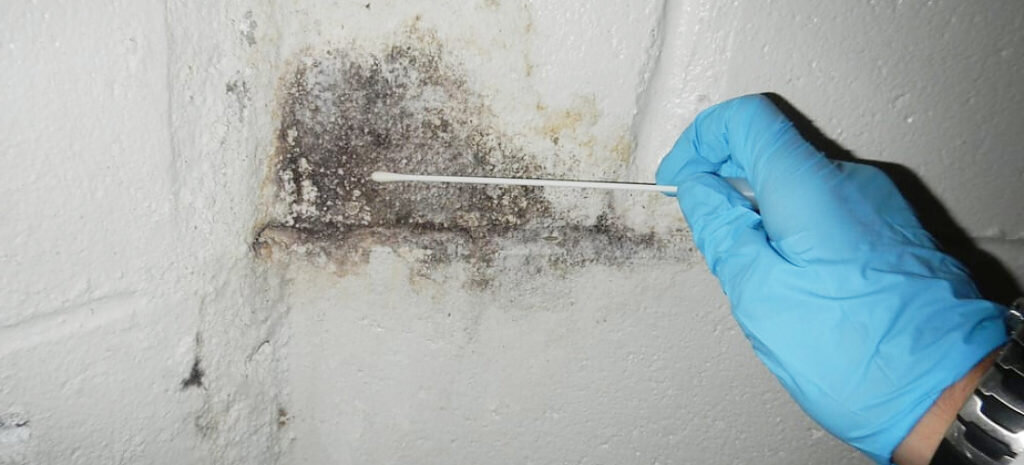Testing Air Quality After Mold Remediation
Testing Air Quality After Mold Remediation
Blog Article
Secret Steps for Successful Message Mold Remediation
Resolving mold issues in a effective and prompt way is critical for preserving a healthy and balanced interior atmosphere. Efficiently finishing mold and mildew removal is a complex procedure that requires attention to detail and adherence to specific procedures. From inspecting dealt with areas to implementing dampness control measures, each action plays an important role in guaranteeing the efficacy of the removal process. There are key post-remediation steps that are just as essential yet often overlooked. These actions not just confirm the success of the removal initiatives yet additionally add to protecting against future mold growth.
Assessment of Treated Areas
Upon conclusion of the mold remediation procedure, a thorough assessment of the treated locations is critical to guarantee the efficiency of the removal efforts. This evaluation offers as a crucial action in the post-remediation phase to confirm that the mold removal and cleaning procedures achieved success in getting rid of the mold and mildew invasion and restoring a risk-free interior atmosphere. The examination should be carried out by qualified professionals who have the expertise to assess the remediated areas thoroughly.
These consist of visual evaluations to examine for any indications of mold and mildew development or water damage, wetness levels to verify that the area is completely dry and cost-free of excess humidity that could advertise mold re-growth, and air high quality testing to make sure that the interior air is secure to breathe. Additionally, the examination might involve utilizing specialized tools such as dampness meters and thermal imaging cameras to detect covert mold and mildew or moisture pockets that could lead to future mold issues if left untreated.

Moisture Control Steps
Efficient dampness control procedures are crucial for preventing mold development and preserving a healthy interior setting. In addition, making use of dehumidifiers in wet locations can aid lower humidity levels, making it harder for mold to flourish.
Routinely keeping the building and evaluating's exterior can likewise protect against moisture breach. Post Mold remediation cleaning. Making sure that seamless gutters are clear, downspouts direct water far from the foundation, and the roof remains in excellent problem can assist protect against water from leaking into the structure. Effectively securing doors and home windows can also help maintain wetness out
Any leakages or spills ought to be cleansed and dried out within 24-48 hours to avoid mold and mildew growth. By implementing these dampness control steps, the danger of mold persisting can be significantly lowered, creating a much healthier indoor atmosphere.
Proper Air Flow Analysis
An integral aspect of making sure a healthy interior environment message mold removal is carrying out an extensive evaluation of the ventilation system. Appropriate ventilation assessment plays an important function in avoiding future mold and mildew growth and maintaining air quality within the afflicted area.
In addition, analyzing the ventilation system includes examining the circulation of air throughout the location to recognize any locations of inadequate circulation where moisture and contaminants might build up. Proper ventilation not only assists in managing humidity degrees yet also aids in removing airborne mold and mildew spores and various other pollutants, thereby boosting total indoor air quality. By addressing any type of air flow issues publish mold removal, homeowner can develop a much healthier and much more comfortable atmosphere for residents while reducing the danger of mold re-infestation.
Cleansing and Sanitation Protocols
To make certain thorough mold and mildew removal, precise adherence to specific cleansing and disinfection protocols is essential. Cleaning up and disinfection protocols play a crucial role in the post-mold removal phase to stop the reappearance address of mold growth and ensure a healthy and risk-free setting.
Additionally, implementing precautionary steps such as using mold and mildew inhibitors and preserving appropriate air flow can assist decrease the threat of future mold infestations. By adhering to strict cleansing and disinfection procedures, home proprietors can make certain the successful eradication of mold and mildew and develop a healthy indoor setting for occupants.
Surveillance and Maintenance Plan
Carrying out a routine tracking and upkeep plan is important for ensuring the long-term efficiency of mold removal initiatives. Once mold remediation is completed, it is vital to establish a tracking timetable to assess the success of the removal process.
Furthermore, developing a maintenance strategy is vital to protecting against future mold and mildew problems. Routine upkeep not only helps in avoiding mold yet additionally adds to maintaining a healthy interior atmosphere - Post Mold remediation cleaning.
Final Thought
In final thought, successful article mold remediation includes complete evaluation of treated locations, implementation of wetness control actions, evaluation of proper ventilation, adherence to cleaning and sanitation procedures, and facility of a monitoring and maintenance plan. These essential actions are read more vital to ensure that mold and mildew development is successfully gotten rid of and stopped from repeating in the future. By following these standards, homeowner can maintain a healthy and balanced and risk-free setting for occupants.
Upon conclusion of the mold and mildew remediation process, a complete assessment of the dealt with locations is critical to make sure the performance of the removal initiatives. These include aesthetic evaluations to inspect for any kind of indications of mold and mildew development or water damage, moisture levels to validate that the location is completely dry and cost-free of excess humidity that can promote mold re-growth, and air high quality screening to make certain that the indoor air is secure to breathe. Furthermore, the assessment may involve using specialized tools such as moisture meters and thermal imaging video cameras to identify hidden mold or wetness pockets that can lead to future mold and mildew issues if left unchecked. By dealing with any type of air flow problems publish mold and mildew remediation, residential property proprietors can develop a healthier and a lot more comfy setting for occupants while decreasing the risk of mold and mildew re-infestation.

Report this page